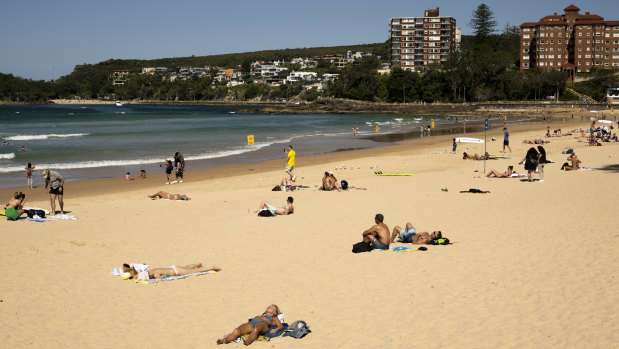Well-heeled on the move from Sydney and Melbourne
By Shane Wright
Well-off parts of Sydney and Melbourne have lost tens of thousands of residents since COVID-19 as regional Australia bears the brunt of the nation’s ageing population.
Data released by the Australian Bureau of Statistics on Thursday reveals some of the country’s most established suburbs are also becoming increasingly feminised, while regional communities are rapidly greying and putting pressure on specialist health and support services.

The Northern Beaches Council area is one of many well-off parts of Sydney to have lost residents since the pandemic.Credit: Janie Barrett
Both Sydney and Melbourne lost residents in the early stages of the pandemic as people moved to regional areas while prospective immigrants found themselves blocked from shifting to Australia.
The ABS figures show that by 2023 there had been a recovery in population growth for the nation’s two largest cities, but that was not being spread evenly across their suburbs.
In Sydney, council areas including Mosman, North Sydney, Northern Beaches and Woollahra had all lost thousands of residents between the start of the pandemic and 2023.
The Northern Beaches Council area alone shed 6120 residents or about 2 per cent of its population, while Woollahra lost 8 per cent.
In Melbourne, outside the city centre which lost thousands of university students, the city’s inner north and east councils all had fewer residents in 2023 than they did before the pandemic started.
The populations of Stonnington, Port Phillip and Merri-bek all fell by 6 per cent during the period, while Boroondara lost 5 per cent. Darebin council area, which takes in a large university population, also lost 6 per cent of its residents.
Apart from these councils losing residents, they are also increasingly dominated by women. Both Woollahra and Mosman have about 87 men for every 100 women, while in Melbourne, the Stonnington and the Boroondara councils have about 92 men for every 100 women.
The outer suburban parts of Sydney and Melbourne continue to grow strongly. In Sydney, the Camden, Blacktown and Hills Shire areas added a combined 95,000 residents between 2020 and 2023.
In Melbourne, the outer suburbs of Wyndham and Melton added almost 75,000 residents over the same period.
The bureau’s head of demography, Beidar Cho, said the capital city with the lowest median age was Darwin, which was also the only one where men outnumbered women.
“In contrast, Adelaide had the oldest median age at 39.2 years, followed by Hobart at 38.9 years. Hobart and Adelaide also had the lowest male-to-female ratios of all capitals,” she said.
The Melbourne City Council area has the youngest population of any major urban area at 29.5 years. At the suburb level, the youngest is Acton in Canberra, which is home to the Australian National University where the median age is 20.8 years.
But the figures highlighted the rapid ageing of much of the country.
Two council areas now have median ages above 60 – Queenscliffe Borough in Victoria (64.2) and Victor Harbor in South Australia (60.5). Both centres are long-established retirement centres.
Of the 546 council areas tracked by the bureau, 340 of them have a median age of at least 40 years.
About 7 per cent of people living in capital cities are aged over 75 compared with 9.4 per cent of people in regional areas.
About a quarter of capital city residents are aged over 55, while 34 per cent of regional Australians are over 55.
Daniel Gannon, the executive director of the Retirement Living Council, said the figures highlighted the pressure that would face all levels of government to protect older Australians and provide the services they needed.
“We have known about our ageing population for a long time now, but governments seem flat-footed in their response to accommodating and caring for this growing cohort of older Australians,” he said.
“Over the next two decades, the number of Australians over 75 will increase by 85 per cent, which will have significant socio-economic impacts on the nation.
“Given the housing and care challenges associated with Australia’s demographic outlook, we need age-friendly solutions to solve a problem that will only get bigger.”
Cut through the noise of federal politics with news, views and expert analysis. Subscribers can sign up to our weekly Inside Politics newsletter.